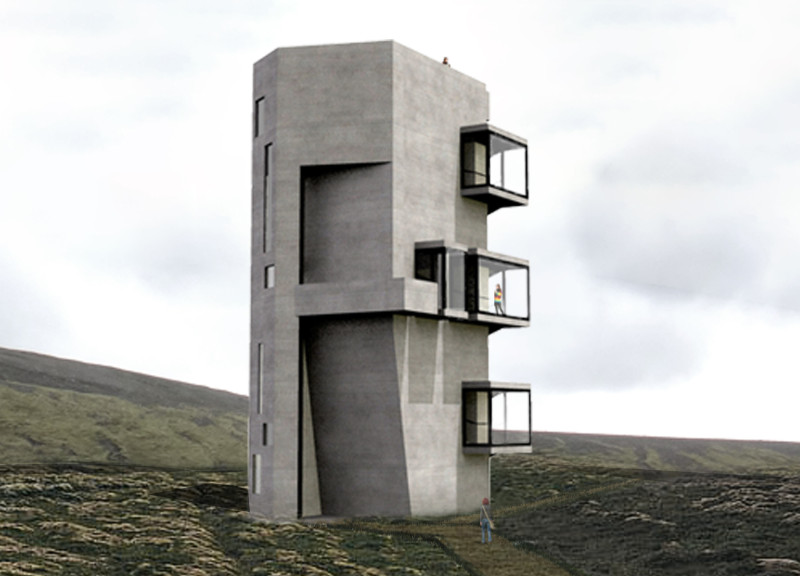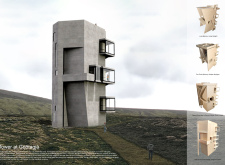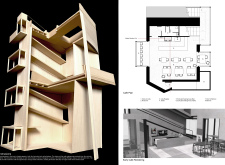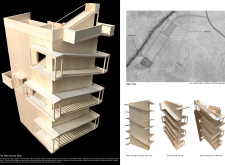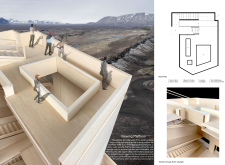5 key facts about this project
Architectural Integration of Landscape
One of the defining characteristics of the Tower at Grjótgjá is its integration with the landscape. The structure's placement maximizes visibility and access, creating strong visual connections between the building and the natural surroundings. The protruding balcony units are not merely additional spaces; they represent an innovative architectural response to the site’s topography, extending the usable space outward. This design approach encourages users to engage with the environment directly, enhancing the overall experience of the building.
The multi-level terraces function as both transitional and private spaces, offering opportunities for social interaction while maintaining individual comfort. The staircase design is particularly noteworthy; it serves as an architectural element that connects the varied levels of the tower while promoting fluid circulation.
Functional and Aesthetic Dynamics
The Tower at Grjótgjá is more than an architectural structure; it is a communal space that fosters connection to both nature and urban life. The interior layout has been strategically designed to enhance user experience, facilitating interaction through communal areas like the café. The large windows and balcony spaces capitalize on natural light, contributing to a welcoming atmosphere.
The architectural plans indicate careful consideration of user flow and spatial dynamics, allowing for easy navigation between levels. The roof design includes an observation platform, providing a unique vantage point that emphasizes the surrounding landscape and engages visitors with their environment in a more meaningful way.
Readers interested in deeper insights into the project should explore the architectural designs, plans, and sections that provide a comprehensive understanding of the Tower at Grjótgjá. Each aspect of this project illustrates a commitment to thoughtful architecture that responds to both function and context, making it a worthwhile study for those engaged in contemporary architectural practices.


